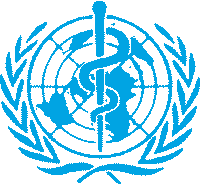|
High
stress levels in post-operative patients are associated with a
mass of negative health and socio-economic consequences. This
applies particularly to the extent of the pre- and post-operative
stress in women who undergo gynaecological surgery.
Stress-related
problems are commonly treated with numerous medications, including
tranquillisers, hypnotics and analgesics. These can, however,
have undesired side-effects and, in some cases, lead to long-lasting
dependency problems.
It
was already recognised a considerable time ago that music can
reduce stress and pain and improve the mood. It has now been shown
that here the Medical Resonance Therapy Music by the classical
composer and musicologist Peter Huebner offers unique advantages
– a recognition which is supported by the extensive experience
gained in various set-ups for experiments commissioned in the
last 5 years including, amongst others, studies in Minsk, Belarus.
The
Medical Resonance Therapy Music method is based on natureorientated
and holistic principles, first described by the Greek scholar
Pythagoras. The effect of these principles has now been enhanced
through the application of highly developed technology which makes
use of the latest advances in computer technology for musical
synthesis.
During
the past years, Medical Resonance Therapy
Music has been successfully used as the main method of stress-reduction
before and after operations for many different disorders and under
various clinical conditions.
In
order to obtain objective substantiation for the numerous concurring
reports about the subjectively experienced beneficial effects
of Medical Resonance Therapy Music, scientific studies were ultimately
carried out. These studies were also intended to find out ways
in which, through a better understanding of the active mechanisms
involved in the physiology, one might increase the effectiveness
of the method still further.
In
the study presented, Medical Resonance Therapy Music was used
for women before and after a gynaecological operation, and compared
with a control group which received conventional treatment with
drugs. The cortisol level was determined on the day of admission,
on the day of the operation and 10-12 days after the operation.
A significant
degree of superiority of Medical Resonance Therapy Music over
the medication could also be observed in the post-operative phase,
where the cortisol levels in the control group were lowered by
a factor of 1.7, compared with a factor of 2.4 in the Medical
Resonance Therapy Music Group.
The
female patients were also evaluated in respect of their emotional
status, for which purpose the Minnesota Multiphasic Personality
Index (MMPI) was applied. This showed considerable individual
differences, which ranged from normal up to severe psycho-pathological
levels. In some cases the level of individual profile peaks was
as high as 90 t-points.
In
the Medical Resonance Therapy Music Group, the psychological status
improved in 88.9% of the patients, compared to a mere 10% improvement
in the control group. The psychological status deteriorated in
11.1% of the patients in the Music Therapy group and in 20% of
the control group. After cessation of the treatment with Medical
Resonance Therapy Music, the MMPI level never went above 50-55
t-points, indicating a normalisation of the psychological status.
There were also fewer complications arising in the Music Therapy
group, and the length of stay in hospital for this group was shortened
by 2-3 days.
In
respect of the stress-reducing effects of the Medical Resonance
Therapy Music by the classical composer and musicologist Peter
Huebner, our experiences in Belarus thus substantiate the reports
of other colleagues. This is particularly true in the case of
patients undergoing surgery, and here the method offers various
medical and socio-economic advantages.
These
include an excellent release of stress-related symptoms, an improved
psychological status, avoidance of costs, side-effects and long-term
damage associated with medicinal therapy, as well as a significantly
reduced stay in hospital. We believe
that the unusual cost-effectiveness of this new method of therapy
opens up significant possibilities, particularly where finances
tend to be limited.
|
